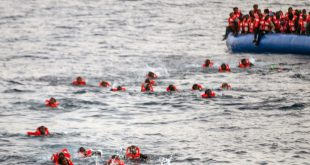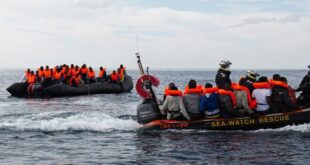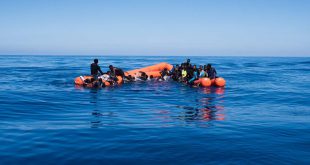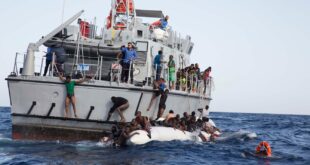EU leaders, gathered at a summit in Brussels on Thursday, have agreed to focus their attention on stopping people from leaving for Europe from North Africa, report Nikolaj Nielsen and Eric Maurice.
On Thursday (19 October), European Council president Donald Tusk agreed to offer Italy more help in shutting down the migrant sea route from Libya by stepping up financial contributions to a special fund for northern Africa.
“We have a real chance of closing the Central Mediterranean route,” he said, expecting results within the next few weeks.
The European Commission has long complained that EU member states are lagging behind in shoring up the trust fund, launched last year, with contributions that also cover the Sahel region, Lake Chad and the Horn of Africa.
The Commission has so far put in €2.9 billion, while EU states have offered €175 million in the so-called EU Trust Fund for Africa. Of that, Italy gave some €92 million, far more than any other EU state.
“We are reaching our limits to this emergency trust fund for Africa,” said Commission president Jean-Claude Juncker.
Migrant arrivals from Libya have reduced by some 70 per cent since last year. But the route across the Mediterranean is also far more deadly.

The International Organisation for Migration (IOM) estimates at least one in 50 die in the attempt, compared to one in 90 one year ago, as the EU-trained Libyan coastguard become more aggressive in their tactics against NGO rescue boats.
In August, Doctors without Borders (MSF), Save the Children and Germany’s Sea Eye suspended rescue operations given the hostility met by Libyan guards.
The EU’s naval force Sophia has also been sinking boats, forcing people onto less seaworthy rubber dinghies, amid moves by EU states to ban their sale to Libya.
Oxfam International’s deputy director, Natalia Alonso, said the drop in arrivals to Europe “only means people in need of help are stuck in Libya, without any improvement of their situation.”
Greece, which is often touted as a success in terms of flows, has also seen over 5,000 arrive on the islands from Turkey last month alone.
Yet conditions remain deplorable on the ground in the lead up to the winter months, with NGOs fearing a 2016 repeat when people awoke to deep snow at the Moria camp on Lesbos island. Temperatures at the time had plummeted to -18 degrees Celsius.
But EU leaders insist the deal is working, noting that some €883 million has been dispersed for refugee projects inside Turkey as of this month and that around 10,000 Syrians have been resettled from the country.
In parallel, misgivings about Turkey’s government crackdown on journalists, human rights activists and others, have done little to curtail Ankara.
© EUobserver
 THE AFRICAN COURIER. Reporting Africa and its Diaspora! The African Courier is an international magazine published in Germany to report on Africa and the Diaspora African experience. The first issue of the bimonthly magazine appeared on the newsstands on 15 February 1998. The African Courier is a communication forum for European-African political, economic and cultural exchanges, and a voice for Africa in Europe.
THE AFRICAN COURIER. Reporting Africa and its Diaspora! The African Courier is an international magazine published in Germany to report on Africa and the Diaspora African experience. The first issue of the bimonthly magazine appeared on the newsstands on 15 February 1998. The African Courier is a communication forum for European-African political, economic and cultural exchanges, and a voice for Africa in Europe.


























